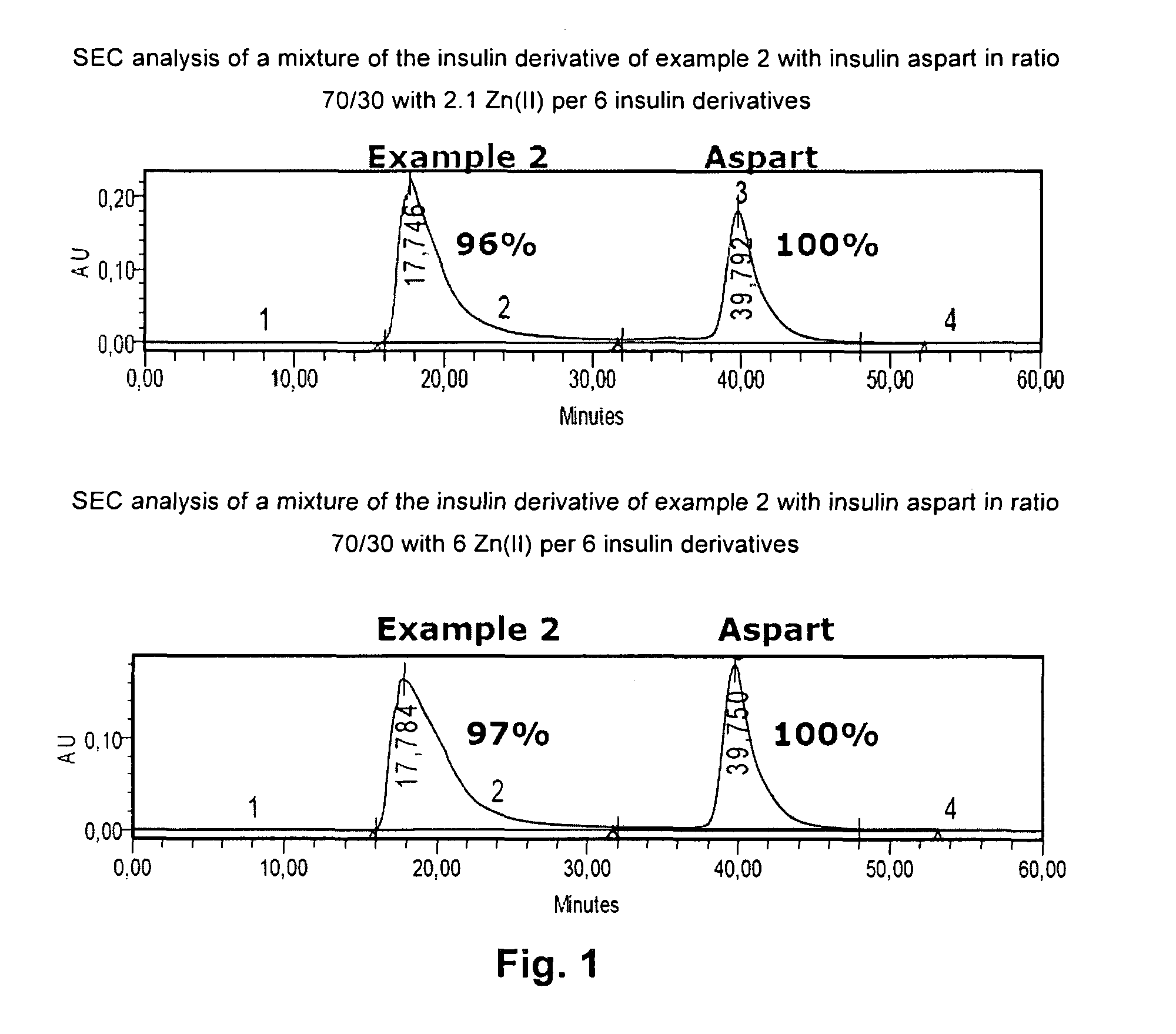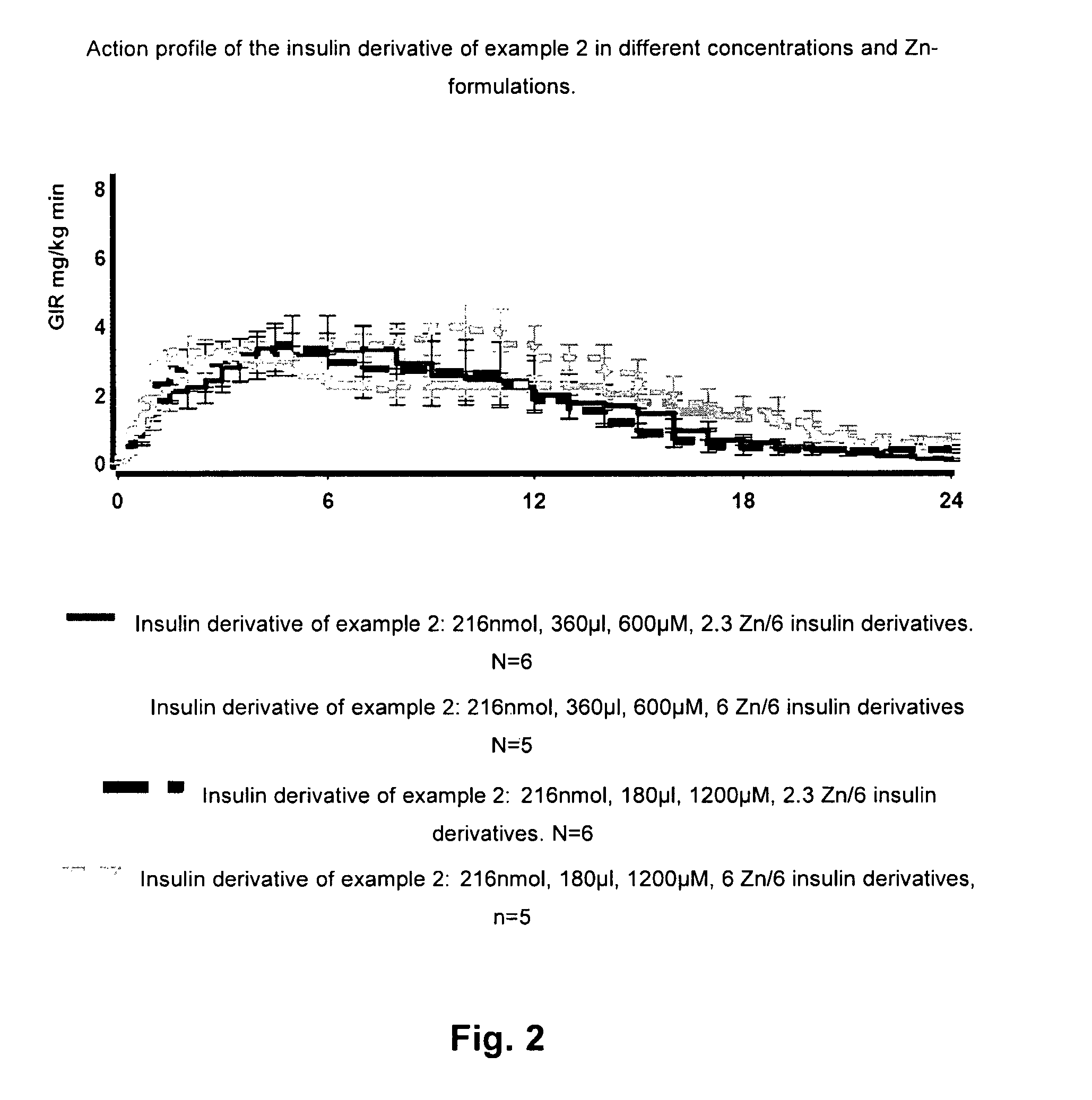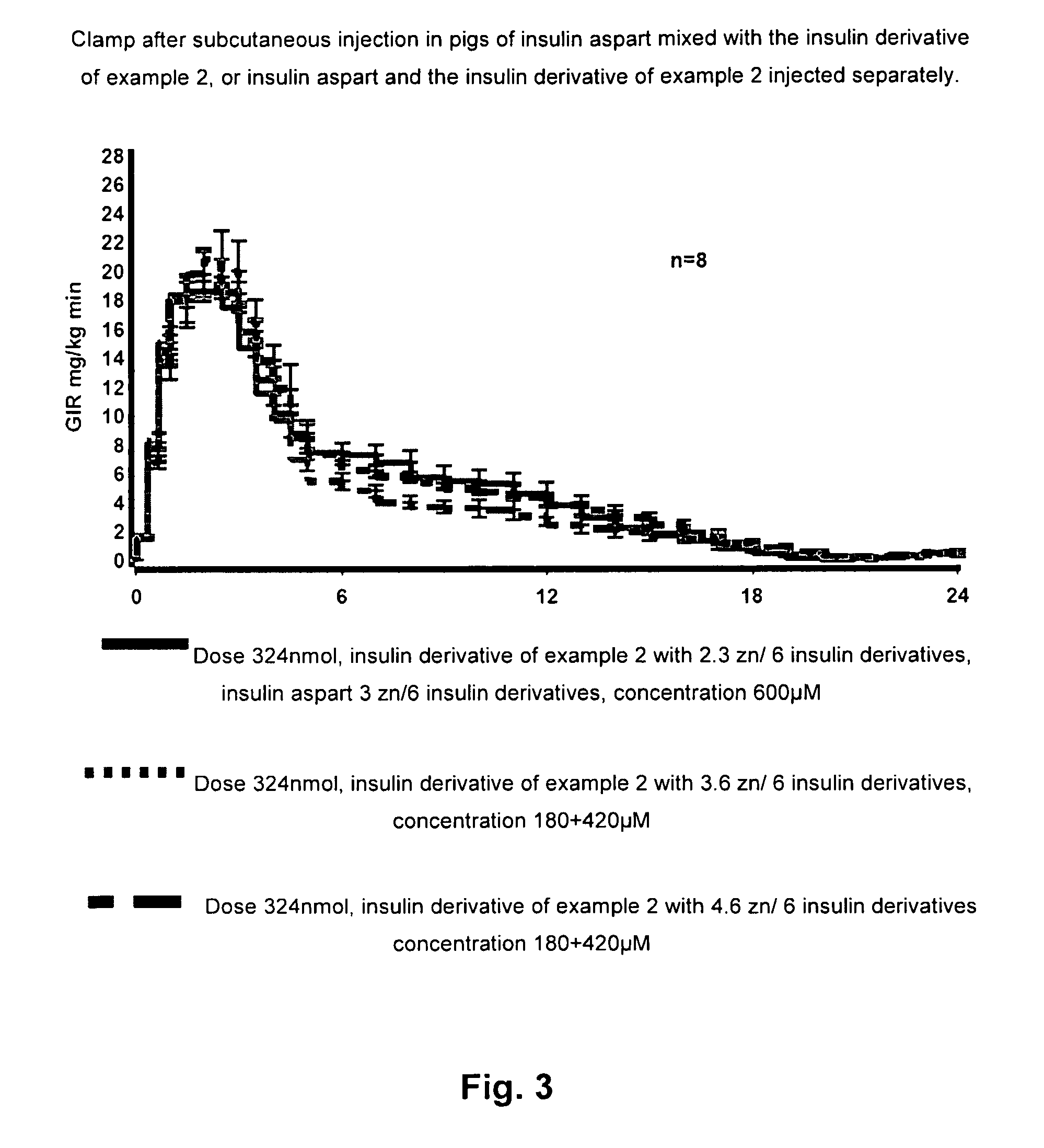Insulin derivative
a technology of insulin and derivatives, applied in the field of human insulin derivatives, can solve problems such as tissue inflammation at the injection si
- Summary
- Abstract
- Description
- Claims
- Application Information
AI Technical Summary
Benefits of technology
Problems solved by technology
Method used
Image
Examples
example 1
Synthesis of NεB29-ω-carboxy-pentadecanoyl-γ-L-glutamylamide desB30 human insulin
[1052]
Step 1: Mono-tert-butyl hexadecandioate
[1053]Hexadecadioic acid (40.0 g, 140 mmol) was suspended in toluene (250 ml) and the mixture was heated to reflux. N,N-dimethylformamide di-tert-butyl acetal (76.3 g, 375 mmol) was added drop-wise over 4 hours. The mixture was refluxed overnight. The solvent was removed in vacuo at 50° C., and the crude material was suspended in DCM / AcOEt (500 ml, 1:1) and stirred for 15 mins. The solids were collected by filtration and triturated with DCM (200 ml). The filtrated were evaporated in vacuo to give crude mono-tert-butyl hexadecandioate, 30 grams. This material was suspended in DCM (50 ml), cooled with ice for 10 mins, and filtered. The solvent was removed in vacuo to leave 25 gram crude mono-tert-butyl hexadecandioate, which was recrystallized from heptane (200 ml) to give mono-tert-butyl hexadecandioate, 15.9 g (33%).
[1054]1H-NMR (CDCl3) δ: 2.35 (t, 2H), 2.20 ...
example 2
Synthesis of NεB29-ω-carboxy-pentadecanoyl-γ-amino-butanoyl desB30 human insulin
[1063]
[1064]This compound was prepared from hexadecandioic acid and γ-aminobutyric acid, in analogy with example 1.
ω-tert-butyl-carboxy-pentadecanoyl-γ-amino-butyric acid succinimidyl ester
[1065]1H-NMR (CDCl3) δ: 5.80 (m, 1H), 3.36 (dd, 2H), 2.84 (s, 4H), 2.65 (t, 2H), 2.21-2.13 (m, 4H), 1.99 (p, 2H), 1.44 (s, 9H), 1.66-1.51 (m, 6H), 1.25 (br, 20H).
NεB29-ω-carboxy-pentadecanoyl-γ-amino-butanoyl desB30 human insulin
[1066]LCMS 6059.9; C273H411N65O79S6 requires 6060.1.
example 3
Synthesis of NεB29-ω-carboxy-tetradecanoyl-γ-L-glutamylamide desB30 human insulin
[1067]
[1068]This compound was prepared from pentadecandioic acid and L-glutamylamide in analogy with example 1.
[1069]LCMS 6088.2; C273H410N66O80S6 requires 6089.1.
PUM
| Property | Measurement | Unit |
|---|---|---|
| particle sizes | aaaaa | aaaaa |
| particle sizes | aaaaa | aaaaa |
| particle size | aaaaa | aaaaa |
Abstract
Description
Claims
Application Information
 Login to View More
Login to View More - R&D
- Intellectual Property
- Life Sciences
- Materials
- Tech Scout
- Unparalleled Data Quality
- Higher Quality Content
- 60% Fewer Hallucinations
Browse by: Latest US Patents, China's latest patents, Technical Efficacy Thesaurus, Application Domain, Technology Topic, Popular Technical Reports.
© 2025 PatSnap. All rights reserved.Legal|Privacy policy|Modern Slavery Act Transparency Statement|Sitemap|About US| Contact US: help@patsnap.com



